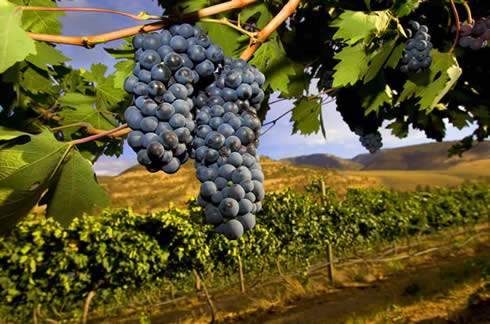One of the keys to understanding Slow Church is captured in the seventeenth-century French phrase le goût de terroir, which can be translated “the taste of the place.”
Carlo Petrini, co-founder of the Slow Food movement, writes often about terroir as “the combination of natural factors (soil, water, slope, height above sea level, vegetation, microclimate) and human ones (tradition and practice and cultivation) that gives a unique character to each small agricultural locality and the food grown, raised, made, and cooked there.” Thus, a Pinot noir from Oregon’s Willamette Valley takes on the taste and texture of the grape, the soil, the barrel, and the late frost. Milk, it turns out, is also highly sensitive to terroir, according to a fascinating and slightly terrifying article on raw milk in the latest issue of The New Yorker.
In the same way that food and wine take on the taste of the place, Slow Church is rooted in the natural, human, and spiritual cultures of particular places. Slow Church is a distinctively local expression of the global body of Christ. “The Word became flesh and blood, and moved into the neighborhood” (John 1:14, The Message).
This is a concept we will be unpacking further in the Slow Church book and on this blog. We look forward to hearing your thoughts about and experiences with the terroir of your places. Today, on the second to last day of National Poetry Month, I’d like to add to our conversation a poem by Robert Morgan. The poem is called “Terroir” and it’s from Morgan’s 2011 collection of the same name. One reason I like this poem is that it hints at how complex our experience of our places can be. The pleasure of living fully into our places comes with the risk of pain. It reminds me of that famous passage from C.S. Lewis’s The Four Loves:
To love at all is to be vulnerable. Love anything and your heart will be wrung and possibly broken. If you want to make sure of keeping it intact you must give it to no one, not even an animal. Wrap it carefully round with hobbies and little luxuries; avoid all entanglements. Lock it up safe in the casket or coffin of your selfishness. But in that casket, safe, dark, motionless, airless, it will change. It will not be broken; it will become unbreakable, impenetrable, irredeemable.
To love a place is to be vulnerable.
Robert Morgan also mentions Gerard Manley Hopkins’s notion of “inscape,” which we will have to explore together as well. Here is that poem:
Terroir
The quality that seems unique,
as thriving from a special spot
of soil, air flow and light specific,
and also frost and winter sleep,
conditions of a particular year,
as every instance comes just once
with mix of mineral and grease,
what Hopkins chose to call inscape,
or individuation, sounds
so close to terror you’d confuse
the two, as if the finest and
the rarest blend would come with just
a hint of fear or pain, the sting
and shiver of revulsion with
the savor of the earth and sun,
of this once, not returning, sung
for this one ear, on this one tongue.
Image Credit: The Pines 1852 Vineyard & Winery, Columbia Valley, Oregon













